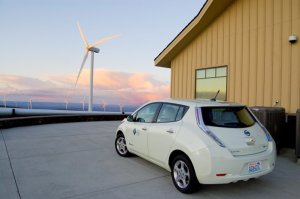 A Lighter Image of Power
A Lighter Image of Power
All Imagery Courtesy of COOKFOX Architects & Terrain
Talking about the “power grid” in the U.S. can bring to mind images of high tension wires strung across massive metal towers and hefty brick buildings with large smokestacks built in the mid-20th century. For a lot of our electricity infrastructure this picture would be accurate. Our power grid is showing its age–not only in our continued reliance on a dirty fuel source, but in the plants that burn it as well. The boom of building coal-fired generation in this country spanned from the 1960’s to the 1990’s when new capacity turned to natural gas. While most of the natural gas plants we have are less than 20 years old, 71% of their coal-burning cousins have been around for over three decades. These older plants represent not only the dirtiest, but often least efficient components of our grid–sometimes with net efficiency as low as 33%.
Fortunately, we are at a pivotal point where the nature of how we produce power is changing. COOKFOX Architects along with landscape architecture firm Terrain are working together on a new breed of power facility in Salem, Massachusetts that questions many of our infrastructural assumptions not only in functionality, but urban presence and response to the local community. The Salem Harbor Station exemplifies the near term transition that we need to encourage in order to take quantifiable steps in improving the rate of pollution and carbon emissions attributed to our power supply.









